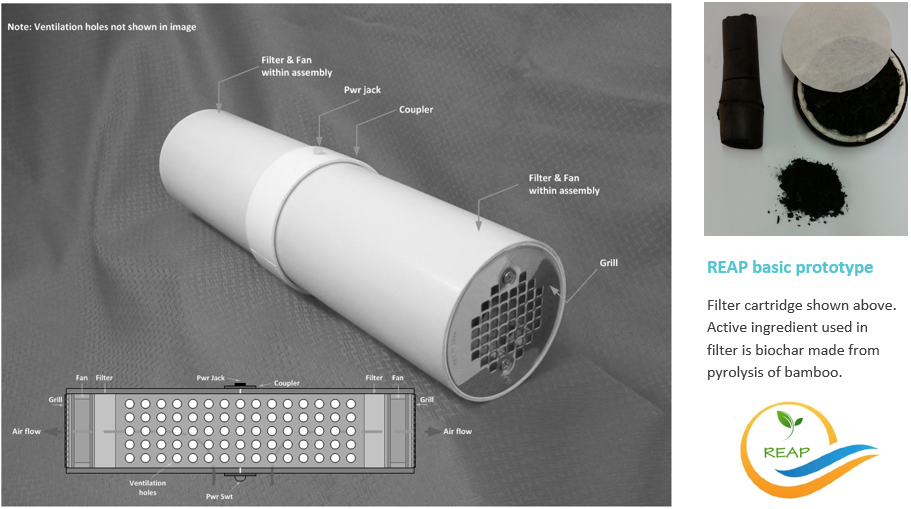In 2013, 6.7million persons suffered premature deaths due to the air quality of their environment. More than 80% of those who died were women, children and the elderly [1]. Two significant sources of pollutants are smoke from fires used for cooking & heating and persistent smog in urban areas. Women, children and the elderly are most at risk since they spend extended periods of time in the polluted environment:
- Elderly with reduced mobility [2]
- Infants & children who spend the majority of time with their primary care giver i.e. their mothers [3]
- Women who spend a significant percentage of the day tending the household [4]
The issue of poor air quality is difficult to address since its effects are not immediately evident. Vulnerable individuals gradually suffer increasing degrees of reduction in their quality of life (difficulty breathing, stunted growth etc.) until there is manifestation of chronic disease (heart issues, cancer, respiratory infections).
The Renewable Energy Air Purifier (REAP) is a low cost air purifier which was conceived to provide immediate relief to persons living and working in locations with poor indoor air quality. The use of air purifiers is a suggested method for reducing the impact of poor indoor air quality on human health [5]. The REAP uses commonly available materials in conjunction with discarded computer components allowing it to be easily assembled and maintained without specialised equipment or training. The simple build of the invention also makes it affordable for low income families which are most at risk. The main design is powered through the electrical mains but a modified design allows for the powering of the device using alternative energy sources to facilitate its operation in remote households which are off the electrical grid.
The impact of poor air quality on the quality of life of millions of persons on a daily basis is quite significant. The REAP in conjunction with public education can make an impact on this crisis. It is through the use of our knowledge and resources with purposeful intent to have positive impact that we can bring about meaningful change.
[1] Time To Act, Climate and Clean Air Coalition, 2013
[2] The risk of dying on days of higher air pollution among the socially disadvantaged elderly, Sabit Cakmak ,
Robert E. Dales , Maria Angelica Rubio, Claudia Blanco Vidal, 2011
[3] Our Children At Risk: The Five Worst Environmental Threats to Their Health. Lawrie Mott, David Fore,
Jennifer Curtis, Gina Solomon, 1997
[4] Household (Indoor) Air Pollution, World Health Organisation, 2014
[5] Air Pollution & Climate Change, Clean Air Initiative – Asia Centre, 2010
